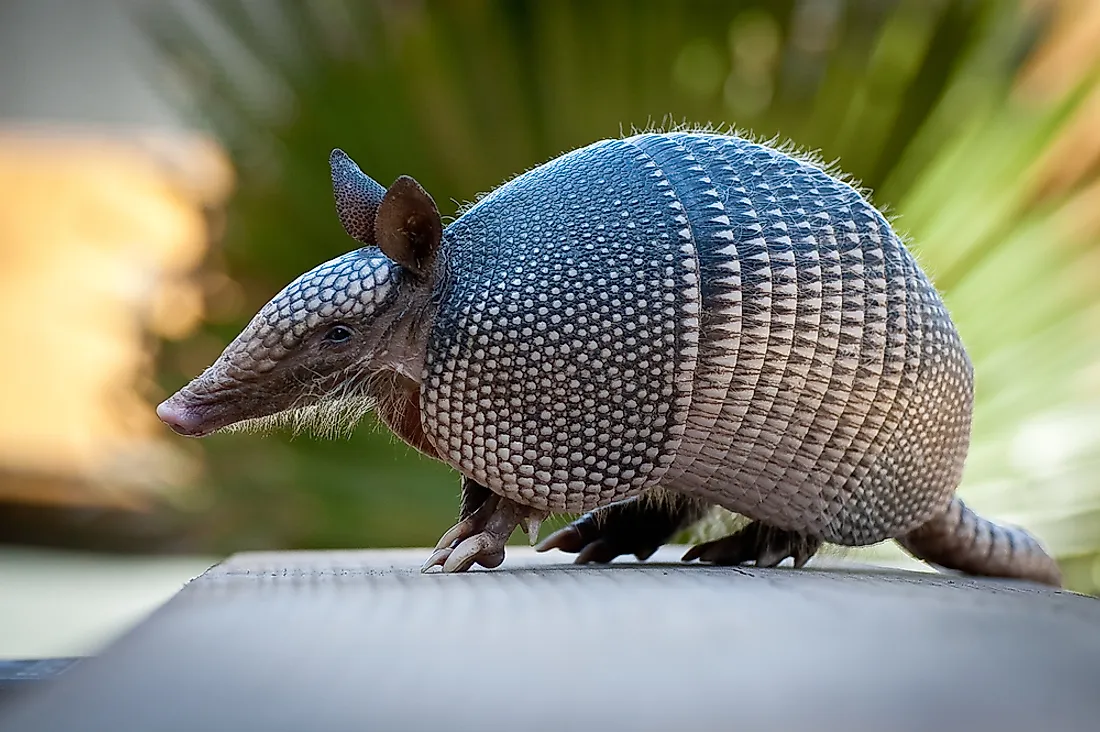Which Mammal Has the Most Teeth?

Topping the list of animals with the most teeth are generally ocean creatures such as dolphins and sharks. The number of teeth varies depending on the species, but bull sharks are known to have approximately 1,500 teeth while some species of dolphins have up to 250 teeth. However, of all the terrestrial animals in the world, the giant armadillo (Priodontes maximus) has the highest number of teeth. The number of its teeth ranges from eighty to a hundred.
Physical Description
The giant armadillo (Priodontes maximus) is the largest existing group of the armadillo. It has hinged bands protecting its body. It also has some three or four bands on its neck. The giant armadillo has a dark brown body with light yellow stripes along its sides. Its head ranges from pale yellow to white in color. Giant armadillos do not have hair on the body but only a few strands projecting between the scutes. In terms of weight, a mature giant armadillo weighs between 18.7kg to 32.5kg and ranges from 75cm to 100cm in length. The teeth of the giant armadillo, both molars and premolars, are similar in appearance. The teeth do not have enamel and grow constantly throughout the animal’s life.
Habitat and Distribution
The giant armadillo dwells in open areas with Cerrado grasslands. They also thrive well in lowland forests. The giant armadillo is dominant in northern South America. The species also thrive in Paraguay and Eastern Brazil though they are rare. In the south, the distribution of the giant armadillo goes as far as northern provinces of Argentina including Chaco, Salta, Formosa, and Santiago del Estero.
Behavior
The giant armadillo lives a solitary life. As they are unable to roll into a protective ball, the giant armadillo hides from predators in their burrows during the day and emerges at night. The giant armadillo is known to dig larger holes than other armadillos. The entrance of the hole is about 43 cm wide. After giving birth, the female giant armadillo closes the entrance of the hole to protect the young ones from predators.
Diet
The giant armadillos dig out their prey using the front claws. They mainly consume termites, however, they are also known to eat spiders, ants, and worms as well as other small invertebrates. The giant armadillo has a keen sense of smell that helps it to trace its prey. At times, the giant armadillo feeds on fruits and bird eggs.
Reproduction
The female giant armadillo posses two teats. They give birth to one offspring per year. The females wean their young ones at the age of seven to eight months. However, according to the recent reports, there is little information about giant armadillo’s reproduction. This is because their young do not surface from the burrow.
Threats and Conservation Measures
The giant armadillos face threats throughout their habitat because of their use as meat. The locals often poach the giant armadillo as its meat is rich in protein. In addition, the locals sell these animals on the black market. Often, the live ones die while in transit due to poor handling.
Cutting down trees to create land for agriculture has also led to the loss of their habitat. This has brought a great decline in the number of the giant armadillos.
The World Conservation Union Red List categorized the giant armadillo as the most vulnerable species in 2002. In the countries like Argentina, Peru, Colombia, and Brazil, giant armadillos are protected by the law. The giant armadillo’s trade is prohibited by Convention on International Trade in Endangered Species (CITES).











